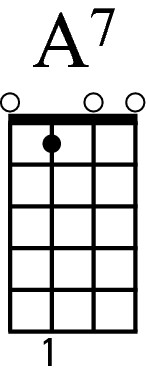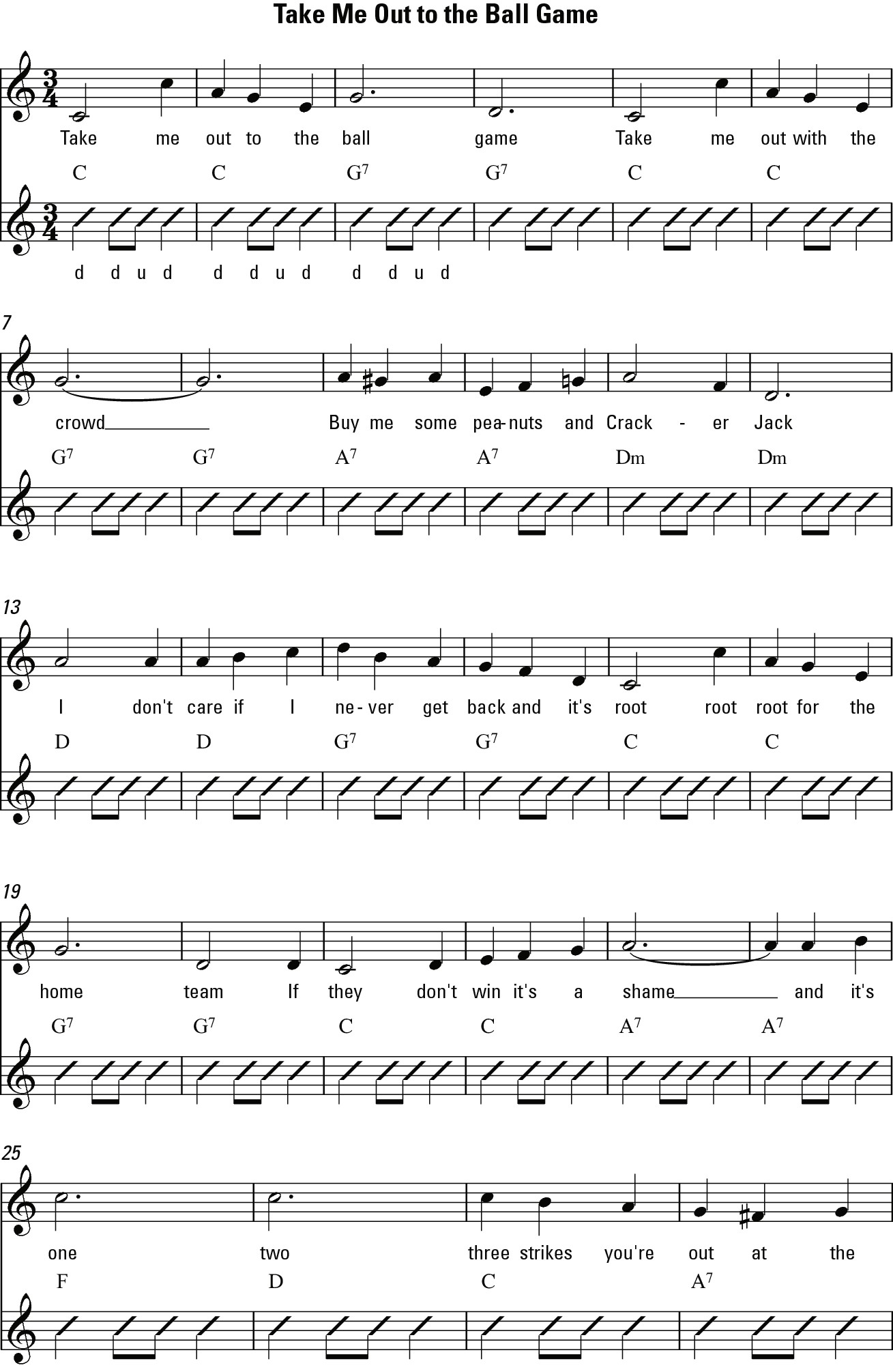Ukulele For Dummies (19 page)
Read Ukulele For Dummies Online
Authors: Alistair Wood

In contrast, Figure 5-13 shows the sign for 3/4 time.
Figure 5-13:
3/4 time notation.

 In terms of strumming, you're not doing anything new with a song in 3/4. The only difference is that the strums are in groups of three instead of groups of four.
In terms of strumming, you're not doing anything new with a song in 3/4. The only difference is that the strums are in groups of three instead of groups of four.
Figure 5-14 shows a typical strumming pattern in 3/4.
Figure 5-14:
3/4 strumming notation.

Therefore, you strum down for a whole beat, and then two down-up strums and finally another down strum. Mnemonically, say to yourself âFlea Ka-la Flea'.
3/4 time is synonymous with waltzes (quite literally â it's often referred to as
waltz time
). But not all 3/4 songs are the sort of thing you'd elegantly dance to around a ballroom. âTake Me Out to the Ballgame' (Track 10) is a good example of a song in 3/4 time that most people would prefer not to waltz to.
 To play âTake Me Out to the Ballgame' you need to know the G chord (shown in Figures 5-15 and 5-16) and the A7 chord (in Figures 5-17 and 5-18).
To play âTake Me Out to the Ballgame' you need to know the G chord (shown in Figures 5-15 and 5-16) and the A7 chord (in Figures 5-17 and 5-18).
Figure 5-15:
The G chord diagram.

Figure 5-16:
Your fingers look like this when playing the G chord.

Figure 5-17:
The A7 chord diagram.

Figure 5-18:
Your fingers look like this when playing the A7 chord.

Figure 5-19 shows the full chord chart.
Figure 5-19:
âTake Me Out to the Ballgame' chord chart.


 Another popular song in 3/4 time is âHouse of the Rising Sun' (made famous by The Animals and Track 11). This song contains a lot of chord changes and so take a deep breath and get stuck in.
Another popular song in 3/4 time is âHouse of the Rising Sun' (made famous by The Animals and Track 11). This song contains a lot of chord changes and so take a deep breath and get stuck in.
For the strumming, I use the pattern shown in Figure 5-20. Figure 5-21 illustrates the chord chart.
Figure 5-20:
âHouse of the Rising Sun' strumming chart.

 All sorts of time signatures are possible, but you come across them only very rarely. The biggest exception is the outlandish edges of heavy metal. So if you like to play that stuff on the uke â and more people do than you may expect â you're going to find that learning more about time signatures is very useful. (Take a look at
All sorts of time signatures are possible, but you come across them only very rarely. The biggest exception is the outlandish edges of heavy metal. So if you like to play that stuff on the uke â and more people do than you may expect â you're going to find that learning more about time signatures is very useful. (Take a look at
Music Theory For Dummies
by Michael Pilhofer and Holly Day for an in-depth study.) Everyone else is pretty safe just knowing about 3/4 and 4/4.